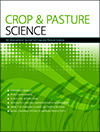CP22295Phenotypic, genotypic and nutritional divergence in cowpea and implications for drought tolerance breeding: a review
 , Abe Shegro Gerrano
, Abe Shegro Gerrano  , Maryke Labuschagne
, Maryke Labuschagne  , Adre Minnaar-Ontong and Ntombokulunga W. Mbuma
, Adre Minnaar-Ontong and Ntombokulunga W. Mbuma 
Cowpea is a highly nutrient-dense, underutilised orphan legume crop with high potential to address malnutrition and food security in the world. Cowpea crop can withstand drought and high-temperature conditions, however, lasting exposure to severe droughts will result in significant yield reduction and poor grain quality. Thus, understanding the variation present in the available cowpea accessions will assist in breeding superior cowpea varieties that can withstand the ever-changing climate.




